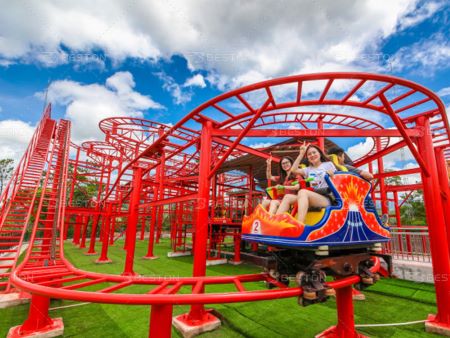


Learn key training methods for roller coaster operators.
Operating a family roller coaster involves understanding the ride’s mechanics and adhering to safety protocols to ensure guest satisfaction. Employees must be equipped to handle the intricacies of thrill rides while fostering a welcoming environment. A well-structured training program is essential for preparing operators for these demands.
Operators are crucial for guest safety and enjoyment, responsible for securing riders, monitoring operations, and addressing concerns. They must thoroughly understand operational guidelines, safety protocols, and emergency procedures related to the family roller coaster. Knowledge of the ride’s features, including height and age restrictions, is essential for effective management.
Effective training programs begin with clear objectives, such as familiarizing operators with mechanics, enhancing customer service skills, and teaching emergency response techniques. Comprehensive training should cover all aspects of operating a family roller coaster to build employee confidence.
Comprehensive training materials, including manuals detailing operations and safety procedures, are vital. Visual aids like diagrams and videos can enhance understanding. Incorporating hands-on training sessions allows employees to practice under the guidance of experienced supervisors. Simulations can also provide valuable insights into ride operation in a risk-free environment.
Training should start with an induction session to acclimate new employees to the park’s culture and operational standards. Emphasizing the importance of safety and customer service in thrill rides is critical. New hires should also meet key personnel, which facilitates communication and efficiency.
Operators must master safety protocols and emergency procedures. Training should include pre-ride inspections, safety restraint checks, and emergency response protocols for various scenarios. Regular drills help ensure operators can respond confidently in real situations.
Effective communication is essential; operators must learn to convey instructions clearly and address guest concerns promptly.
Exceptional customer service is critical. Training should focus on engaging guests positively, encouraging operators to greet riders and create excitement. Operators should learn to recognize and address guest concerns, reassuring those who may be apprehensive about riding.
Hands-on training is essential for building operator competence. After initial training, employees should shadow experienced operators to observe ride operation nuances and guest interactions. Supervisors should provide feedback during these sessions to enhance learning.
Regular evaluations are vital for assessing the effectiveness of the training program. Assessments can gauge operator knowledge and skills while providing insights into performance and customer satisfaction. A certification process for operators can motivate employees to excel and foster a culture of continuous improvement.
Thorough training for operating a family roller coaster is crucial for ensuring safety and enhancing guest experiences. A comprehensive training program covering safety protocols, communication skills, customer service, and hands-on experience equips staff to excel in their roles. Ongoing training and evaluation keep employees proficient and engaged, contributing to the attraction’s success and overall guest satisfaction.
